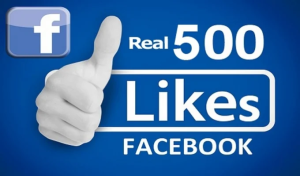Do You Know Where All Your Conversions Are Going?

The internet and websites continue to evolve, making it really important for you to keep up with the latest trends and research to ensure your site is doing the job you need done — converting prospects into customers.
In fact, a review of your website may show that some of the things you’ve built with a goal of inspiring trust and engagements are actually causing visitors to bounce rather than convert.
Yes, I know there’s a lot of confusion and conflicting advice out there. So to help you, I’ve come up with a list of the five worst conversion killers — and some easy fixes to help you overcome them.
Image Sliders
You may think an image slider is a great idea because it allows you to put lots of different material on your website. Some people think that different images will appeal to different groups of people.
Or they believe that using multiple images is a good way to show the breadth of your experience or offerings by “sharing” the space at the top of your homepage to “feature” a number of offers and promotions at the same time via an image slider.
The truth is, image sliders kill your conversions! Findings from many studies offer this insight:
- Although the first slide may get a small number of click-throughs, there is virtually no action on the remainder.
- Visitors to your view image sliders as advertising, and pay no attention to it.
- Having so many competing messages leaves your site with no focus. And you need focus to gain conversions.
 Here’s another problem with sliders. Best practice in web design follows psychology — you want your visitor to feel like they are in control on your site. Frankly, sliders are disturbing. Many are set to rotate automatically and they move too fast. If there is a way for users to navigate, it’s often not clear. Instead of engaging with your site, visitors are distracted by the sliders and don’t stick around.
Here’s another problem with sliders. Best practice in web design follows psychology — you want your visitor to feel like they are in control on your site. Frankly, sliders are disturbing. Many are set to rotate automatically and they move too fast. If there is a way for users to navigate, it’s often not clear. Instead of engaging with your site, visitors are distracted by the sliders and don’t stick around.
By now I’m sure you’re wondering, if I don’t recommend sliders, what should you put on your website? I think the answer is simple — replace your sliders with one really powerful offer or message that you know will engage with your “bread and butter” customers.
Remember the solid marketing axiom that says something like “if you want more customers, find more people like the customers you already have?” Well, you should know already which of your customers, or what type of customer, provides the backbone of support for your business. Come up with an offer or message that will appeal to them.
And don’t be afraid to experiment. Just because you have only one offer or message occupying that prime space on your web page doesn’t mean it has to be the same message. Where you might have had multiple messages on sliders, try several messages at a test, but only message at a time — then track your conversions. You’ll soon see what will work best for you.
Plain Text Testimonials
We’re all familiar with testimonials in marketing material.
On your website, they can send your conversion rates through the roof by inspiring trust. But to be truly effective, they have to be — and appear to be — 100% bona fide.
Testimonials fall short when they are text only. In that form they have become less believable.
Why do you think that might be?
I think it might be the fake reviews currently proliferating the internet. Yes, some businesses are actually paying people to create fake testimonials. The growth of this phenomenon, sadly, has been such that the public has become suspicious about testimonials and reviews.
The upshot of this is that testimonial on your website with just will not have the believability you would like and won’t help you connect and convert prospects.
With a little more work, though, you can use testimonials on your website with great positive impact.
Here are two easy fixes to help you:
Easy Fix: The Power of a Photo (Images)
Adding a photo to your testimonial will provide a face for those positive words and a 100 percent increase in perceived authenticity. Your testimonials will gain the fact that there is a face next to the name and positive words about your business will credibility because the photo will give it a face.
Slightly Harder Fix: Video
Considering the growth of video online you should not be surprised to learn that if adding a photo to a testimonial increases its value, letting your fan speak directly to your website visitors via video will benefit you even more.
So much of human communication is non-verbal. Words are powerful, even better is the spoken word. Let your website visitors see and hear the people who have good things to say about your business. They will be able to feel the raw emotion and excitement of your customers. Excitement is contagious and more like to trigger a conversion.
 You can accomplish this easily with simple technology. Think of a few former customers who can provide a testimonial for you and make it easy for them. Go to their location and record them sharing their thoughts about your business.
You can accomplish this easily with simple technology. Think of a few former customers who can provide a testimonial for you and make it easy for them. Go to their location and record them sharing their thoughts about your business.
A smart phone or similar device can record this and it can be prepared to be available on your website with relative ease. The most important thing is to capture the enthusiasm your customer has for your business.
Social Media Icons Stealing the Show
You know social media can be powerful for your business and you understand the importance of your website as the hub for your marketing. So naturally you think you should put links from your website to your social media pages, correct?
No, no, no!
Think about it. You’ve worked to create a great website or landing page, and your prospect is right there with you. You’ve got an offer, a call-to-action, effective testimonials with photos or even video and you are ready to build your business through conversions.
Yes, but… all of those clickable icons advertising social media sites are designed to take your visitors away from your site to your Facebook page or elsewhere. Why would you want to do that?
 You do want people to engage with you on social media, but not to leave your site. And fortunately there are far better ways to stimulate that than adding clickable buttons to your website.
You do want people to engage with you on social media, but not to leave your site. And fortunately there are far better ways to stimulate that than adding clickable buttons to your website.
What you need is social media plugins instead. With these, your site visitors will be encouraged to “like” your Facebook page, as an example, or add you on other social channels, but they won’t be bounced off your website.
See, I told you that would be an easy fix!
Be Specific With Numbers
Here’s another lesson in psychology.
Consider these messages:
- “Over 56,000 Satisfied Customers & Counting”
- “56,987 Satisfied Customers & Counting”
Did you guess number two? If so, you’re correct.
It’s not a mystery, the precision of 56,987 makes the statement more believable. Like using a face with text or video makes testimonials more believable.
And having website visitors believe you is essential.
“Over 56,000 Happy Customers & Counting?” or “56,486 Happy Customers & Counting?”
As silly as it might seem, exact numbers do make a difference. Just like a testimonial accompanied by a photo is more effective than text, precise numbers read as more credible.
If you’ve used numbers to help tell your story on your website, make sure they’re precise numbers, not rounded numbers. If it’s a number that’s going to change as you build business, you can even have a real-time counter to automatically update the number for you.
Shady Trust Seals
If you’ve done business online, you’ve likely encountered websites that use a trust seal or badge in an effort to help customers feel more secure about their financial transactions. However, not all of these If you’re running an ecommerce website, you are probably using some type of trust seal or badge to make customers feel more secure.
Essentially, these seals are a type of third party verification that the site you’re dealing with has business practices designed to protect you. There are different kinds of seals such as privacy seals, business practice seals, business identity seals and security seals.
 But all seals do not have the same credibility.
But all seals do not have the same credibility.
Those from the largest internet security companies, such as McAfee or Norton, come with a pretty hefty price that many businesses can’t support. There are some free or less expensive options. If you use an obscure seal with a poor design not recognized by consumers, it will not help you build trust.
Your customers probably don’t really understand what is involved in keeping their web transactions safe. It is important that you’re using a secure server and a trust seal that helps your customer feel secure. But studies show that if you can’t afford the offerings of the larger security companies, a seal that you make yourself can have the same impact for you, as long as it is well designed.






